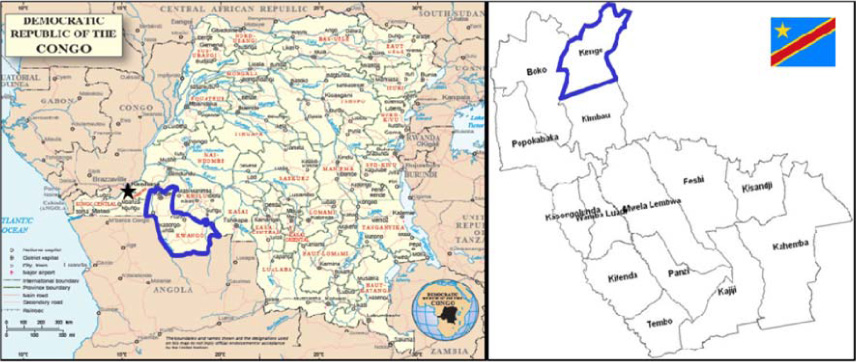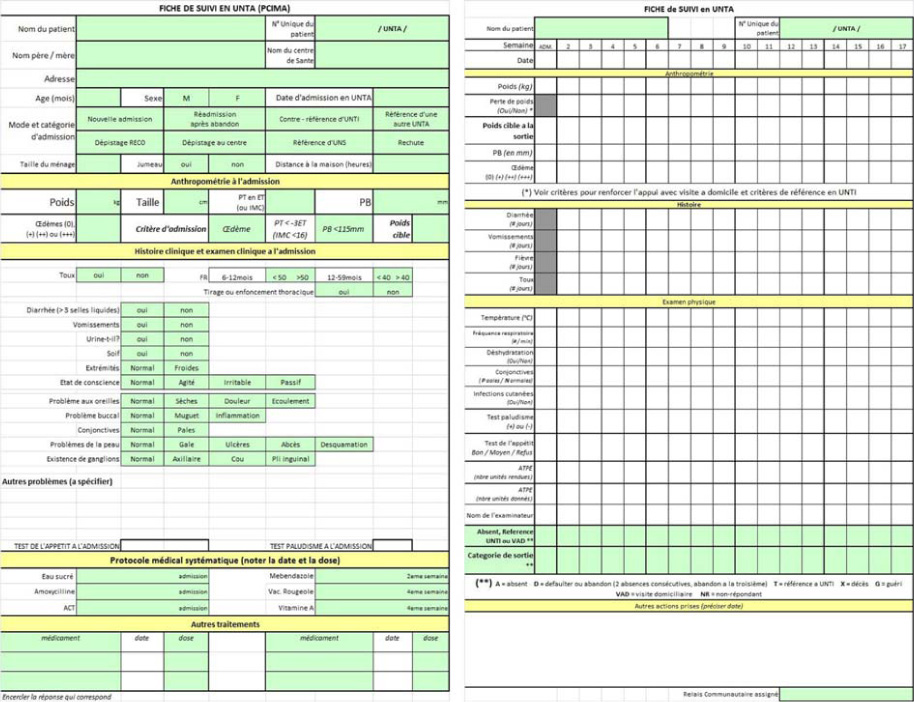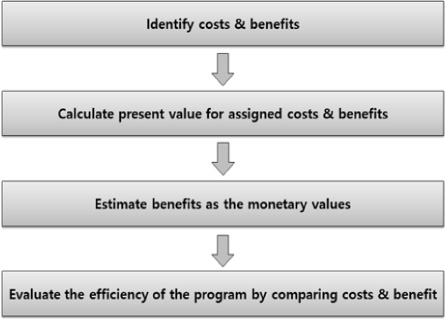Korean J Community Nutr.
2018 Oct;23(5):385-396. 10.5720/kjcn.2018.23.5.385.
Cost-benefit Analysis of Nutrition Management Program for Children Aged Under 5 Years in DR Congo
- Affiliations
-
- 1Department of Health Administration, Graduate School, Yonsei University, Korea, PhD Candidate.
- 2Yonsei Global Health Center, Yonsei University, Wonju, Gangwon-do 26493, Korea, Intern.
- 3Department of Health Administration, Graduate School, Yonsei University, Korea, Professor. ewnam@yonsei.ac.kr
- KMID: 2424738
- DOI: http://doi.org/10.5720/kjcn.2018.23.5.385
Abstract
OBJECTIVES
This study aims to evaluate the economic efficiency of a nutrition management program for children under 5 years of age in Kenge, Kwango District, Democratic Republic of the Congo (DR Congo) from 2014 to 2016.
METHODS
The economic efficiency of a nutrition management program for children under 5 years of age who have recovered from malnutrition status was evaluated using a cost-benefit analysis. The costs were analyzed according to the executed budget incurred during the project period. The benefits were estimated as the monetary value of the saved lives of children under 5 years of age. The economic efficiency of the program was determined by the Benefit-Cost Ratio (BCR). The BCR was calculated by dividing the total discounted benefit by the total discounted costs. The project is economically efficient when the BCR is greater than 1.
RESULTS
The costs of the nutrition management program were calculated as 1,677,609,648 Korean Won (KRW). A total of 2,466 children survived with improved malnutrition status through this program. The benefit for the reduction of mortality for children under 5 years of age was estimated to be 6,814,354,467 KRW, the estimated value of life for 2,466 children. The BCR was 4.06.
CONCLUSIONS
The nutrition management program for children under 5 years of age in DR Congo was found to be a cost-effective project. Successful and efficient Official Development Assistance (ODA) for a health project requires integrated and comprehensive strategies and specialized international development consulting to improve efficiency. Future nutrition management programs should take into account the national health program to maintain the sustainability of the project.
Keyword
MeSH Terms
Figure
Reference
-
1. United Nations Children's Fund. Progress for children: What is undernutrition? [Internet]. United Nations Children's Fund;2018. cited 2018 Sep 3. Available from: https://www.unicef.org/progressforchildren/2006n4/index_undernutrition.html#note2.2. World Health Organization. Malnutrition [Internet]. World Health Organization;2018. cited 2018 Sep 3. Available from: http://www.who.int/news-room/fact-sheets/detail/malnutrition.3. Belli PC, Bustreo F, Preker A. Investing in children's health: what are the economic benefits. Bull World Health Organ. 2005; 83(10):777–784.4. United Nations Children's Fund. Malnutrition [Internet]. United Nations Children's Fund;2018. cited 2018 Jul 8. Available from: https://data.unicef.org/topic/nutrition/malnutrition/.5. Bhutta ZA, Ahmed T, Black RE, Cousens S, Dewey K, Giugliani E, et al. What works? Interventions for maternal and child undernutrition and survival. Lancet. 2008; 371(9610):417–440.
Article6. Black RE, Allen LH, Bhutta ZA, Caulfield LE, De Onis M, Ezzati M, et al. Maternal and child undernutrition: global and regional exposures and health consequences. Lancet. 2008; 371(9608):243–260.
Article7. World Health Organization. Nutrition in the WHO African Region. Brazzaville: WHO Regional Office for Africa;2017.8. World Health Organization. Joint child malnutrition estimates: Levels and trends (2018 edition) [Internet]. World Health Organization;2018. cited 2018 Sep 3. Available from: http://www.who.int/nutgrowthdb/estimates2017/en/.9. World Health Organization. 10 threats to global health in 2018 [Internet]. World Health Organization;2018. cited 2018 Jul 8. Available from: https://medium.com/@who/10-threats-to-globalhealth-in-2018-232daf0bbef3.10. World Health Organization. Children: reducing mortality [Internet]. World Health Organization;2017. cited 2018 Jul 10. Available from: http://www.who.int/mediacentre/factsheets/fs178/en/.11. Drummond MF, Sculpher MJ, Claxton K, Stoddart GL, Torrance GW. Methods for the economic evaluation of health care programmes. 4th ed. Oxford: Oxford University Press;2015. p. 1–464.12. Kwak SI, Jeon HL, Kim MH. Benefit-cost analysis of ODA projects. Seoul: Korea Institute for International Economic Policy;2012.13. Yang BM, Kim JH, Lee TJ, Bae EY. Health economics, reedition. Seoul: Nanam Publishing House;2013. p. 1–476.14. Organization for Economic Co-operation and Development. DAC criteria for evaluating development assistance [Internet]. Organization for Economic Co-operation and Development;2018. cited 2018 Jul 10. Available from: http://www.oecd.org/dac/evaluation/daccriteriaforevaluatingdevelopmentassistance.htm.15. Bhutta ZA. Addressing severe acute malnutrition where it matters. Lancet. 2009; 374(9684):94–96.
Article16. Bachmann MO. Cost effectiveness of community-based therapeutic care for children with severe acute malnutrition in Zambia: decision tree model. Cost Eff Resour Alloc. 2009; 7(1):2.
Article17. Collins S, Sadler K, Dent N, Khara T, Guerrero S, Myatt M, et al. Key issues in the success of community-based management of severe malnutrition. Food Nutr Bull. 2006; 27:3_suppl3. S49–S82.
Article18. Jenkins GP. A cost-effectiveness analysis of acute malnutrition treatment using ready to use theraupetic foods. Cambridge Resources International INC.: JDI Executive Programs;2013.19. Hoddinott J, Alderman H, Behrman JR, Haddad L, Horton S. The economic rationale for investing in stunting reduction. Matern Child Nutr. 2013; 9:69–82.
Article20. Hoddinott J, Horton S. Stunting as a sustainable development goal. SCN News. 2015; 41:59.21. World Food Programme. Democratic Republic of Congo country brief July 2018 [Internet]. World Food Programme;2018. cited 2018 Jul 17. Available from: https://docs.wfp.org/api/documents/WFP-0000074138/download/?_ga=2.196982894.33924239.1536547172-930083614.1536547172.22. Système National d'Information Sanitaire. Annual report: Population of Kenge health area. Kenge: Système National d'Information Sanitaire;2015.23. United Nations Children's Fund. Measuring MUAC [Internet]. United Nations Children's Fund;2009. cited 2018 Jul 10. Available from: https://www.unicef.org/nutrition/training/3.1.3/2.html.24. Woo SH. Transparency and challenge of Republic of Korea's ODA [Internet]. 2013. cited 2018 Jul 10. Available from: http://www.woosangho.net/wp-content/uploads/2013/10/3-%EA%B5%AD%EA%B0%90%EC%9E%90%EB%A3%8C%EC%A7%91-ODA.pdf.25. Jung DW, Nam EW, Kim DH. Cost effective analysis on KOICA and Yonsei University cooperative project of MCH programs in Ethiopia. Korea Assoc Int Dev Coop. 2013; 6(2):119–152.26. Committee for International Development Cooperation. 2017 Korea's ODA white paper: Beautiful sharing wonderful growing. Sejong: Committee for International Development Cooperation;2017.27. Export-Import Bank of Korea. F/S guidelines. Seoul: Export-Import Bank of Korea;2007.28. Warusawitharana M. The social discount rate in developing countries [Internet]. Board of Governors of the Federal Reserve System (US);2014. cited 2018 Jul 14. Available from: https://www.federalreserve.gov/econresdata/notes/feds-notes/2014/thesocial-discount-rate-in-developing-countries-20141009.html.29. Choi JE, Park TK. Estimation of the social discount rate for the public investment projects. J Soc Sci. 2015; 41(3):145–167.30. Ko YH, Ki KS, Kim SJ, Kim JH, Park IH, Yang HW, et al. Case study of economic feasibility evaluation for project planning [Internet]. Korea International Cooperation Agency;2016. cited 2018 Jul 12. Available from: http://lib.koica.go.kr/search/media/img/CAT000000040710?metsno=000000015110&fileid=M000000015110_FILE000001.31. World Bank. GNI per capita, Atlas method (current US$) [Internet]. World Bank;2018. cited 2018 Jul 12. Available from: https://data.worldbank.org/indicator/NY.GNP.PCAP.CD?end=2015&locations=CD&start=1962.32. World Bank. GDP growth (annual %) [Internet]. World Bank;2018. cited 2018 Jul 12. Available from: https://data.worldbank.org/indicator/NY.GDP.MKTP.KD.ZG?end=2014&locations=CD&start=1961.33. Central Intelligence Agency. Life expectancy [Internet]. Central Intelligence Agency;2017. cited 2018 Jul 12. Available from: https://www.cia.gov/library/publications/the-world-factbook/rankorder/2102rank.html.34. World Bank. Official exchange rate (LCU per US$, period average) [Internet]. World Bank;2018. cited 2018 Jul 12. Available from: https://data.worldbank.org/indicator/PA.NUS.FCRF?end=2016&locations=KR&start=2015.35. Oh CH, Lee HS, Ji NY. A study for maternal and child health ODA program model [Internet]. Korea International Cooperation Agency;2011. cited 2018 Jul 12. Available from: http://lib.koica.go.kr/search/media/img/CAT000000033927?metsno=000000010842&fileid=M000000010842_FILE000002.36. Lee MS. Cost-benefit analysis of maternal and child health program: Focusing on Lao People's Democratic Republic. J Korean Soc Sch Community Health Educ. 2014; 15(2):115–125.37. Park JH. History and challenges of the ODA program for maternal and child health of Korea. J Korean Soc Matern Child Health. 2015; 19(2):155–162.38. Yu SH, Sohn M, Cho WH, Park EC, Lee YD, Lee KS, et al. Cost-benefit analysis of health screening test for the insured. Korean J Prev Med. 1989; 22(2):248–258.
- Full Text Links
- Actions
-
Cited
- CITED
-
- Close
- Share
- Similar articles
-
- Cost-benefit analysis of a water fluoridation program for 11 years in Jinju, Korea
- Comparison of Benefit Estimation Models in Cost-Benefit Analysis: A Case of Chronic Hypertension Management Programs
- An Evaluation of Effects on Hypertension and Diabetes Mellitus Management of a Community-Based Nursing Care Center Using Cost-Benefit Analysis
- Economic evaluation of v accinations - a methodologic review
- Cost-benefit Analysis of Massive Screening for Inborn Errors of Metabolism in Korea





